Winter is here already, and it feels as if I didn't even get a proper opportunity to say goodbye to autumn. The seasons are whizzing past, mostly unmarked, as I have my head buried deeply in my work. I'm looking forward to the light at the end of the tunnel, in the New Year.
To see off these wintery mornings, I reach for a cheering, friendly tea: the 002 from Shuangjiang Mengku's Muyechun label, the exclusive output of their Yongde sub-department that was set up last year. Readers with good memories might recall my pleasure at encountering the simple, sweet joys of the 2007 Muyechun 001.
ST once wrote that these teas were "a hot favourite among the ladies in Singapore"! I always think of that phrase when I encounter Muyechun teas...
ST once wrote that these teas were "a hot favourite among the ladies in Singapore"! I always think of that phrase when I encounter Muyechun teas...
As pictured below, this cake has fewer tips than its 001 sister, but consists of small, springtime growth. The aroma is reserved, but what there is to be found is gently sweet, and candy-like.
In the wenxiangbei [aroma cup], the candy note continues in a simple, but pleasant, sugary scent. The duration of the aroma is very decent, and I hope that this continues...
In the wenxiangbei [aroma cup], the candy note continues in a simple, but pleasant, sugary scent. The duration of the aroma is very decent, and I hope that this continues...
(Colour balance agony, above.)
More simple, candy-sweet charms in the mouth, yet mixed with a lower, "brown" characteristic, that I associate with plantation leaves - that ever-so-slightly ragged roughness that sometimes accompanies young leaves. The lower flavours of larger leaves continue with some notes of root-crop flavours.
Oddly enough, this tea is noticeably cooling in its sensation - as if I had just eaten a mint. Fresh! I wasn't expecting such good leaves to have been used in a fun-while-it-lasts cake, and am pleasantly surprised.
Oddly enough, this tea is noticeably cooling in its sensation - as if I had just eaten a mint. Fresh! I wasn't expecting such good leaves to have been used in a fun-while-it-lasts cake, and am pleasantly surprised.
The chaqi of this cake is very good: it lifts me up and brightens me, but at the same time soothes and calms me. I can see why tea was a hit with Chan monks.
Simple, sweet, with some broad, lower notes, this tea is lifted above the herd by its pronounced cooling sensation and excellent chaqi. The huigan is more of the candied sweetness. For not much investment (~£8), this is a friendly, amiable affair.
I often liken my tea sessions to conversations. This one is a young girl with some education - a pleasure to talk with, and enjoyably light.
I often liken my tea sessions to conversations. This one is a young girl with some education - a pleasure to talk with, and enjoyably light.
Addendum
October, 2012
Brrr. Say you what you will about the quality of the writing at the Half Dipper, but you can't contest the fact that my photography used to hurt the eyes.
Let's bathe our eyes with some relieving images of bingcha stacks.
That's much better.
The Stacks extend life; the Stacks expand consciousness; the Stacks are vital to space travel.
My old Muyechun was a humble cake. I rather liked it, back in the day, and squirrelled away some random cakes in the Stacks, to see what would happen to them. They've moved around the city as Lei and I have migrated from being Mr-and-Miss, to Mr-and-Mrs, to Mr-and-Dr, until parity was eventually achieved.
Honestly, the last time that I drank this tea was when I bought it. This is, amusingly, a common tale among my cakes. I'm buying lots of tea, but most of it only gets tried once, until I remember that it exists and try to find it again.
The Stacks facilitate this process of losing tea.
Originally, my Muyechun 002 (moneypenny) was green, fresh, and not dissimilar to other major labels, such as Dayi.
In the interim, much has changed. The leaves give off a mighty aroma of pungent humidity when I teasingly denude the cake of its wrapper. England is by no means "wet storage", but it certainly smells undry.
Jemmying some leaves from the bing releases further pleasant scents. "Darkness and dense sweetness", I seem to have put down in my journal.
I'm glad that I plumped for the 002, rather than for its lightweight sister, the 001. I am still reminded of ST saying that the 001 was "popular with the ladies", which makes me laugh aloud even as I write this.
I can very easily imagine ST putting on a "Ladies' Night", and serving 001, along with a few male strippers.
I noted a cooling sensation in my original notes, which now seems accentuated: it numbs the tip of my tongue. The yellow soup has become orange-like; the sweetness is a dry sweetness similar to that of some white wines.
There is a warm, damp taste of humid straw, which is most pleasant (despite the fact that it sounds dreadful). I am pleased by the penetrating depth of the sweetness, which has come on very well.
"Yes, this is very good", notes my dear wife, after a cup. The tea opens into a solid, sweet, and refreshingly "dry" series of infusions - dry in the sense of the tannic dryness of some grapes, rather than the storage.
My efforts with acquiring more of this cake from Western Yunnan Tea seem to have failed, but this merely redoubles my motivation to tackle the Bao-Which-Is-Tao once more. It is commonly available, and inexpensive, and I'd like to own more of it, if it tastes like these English versions.

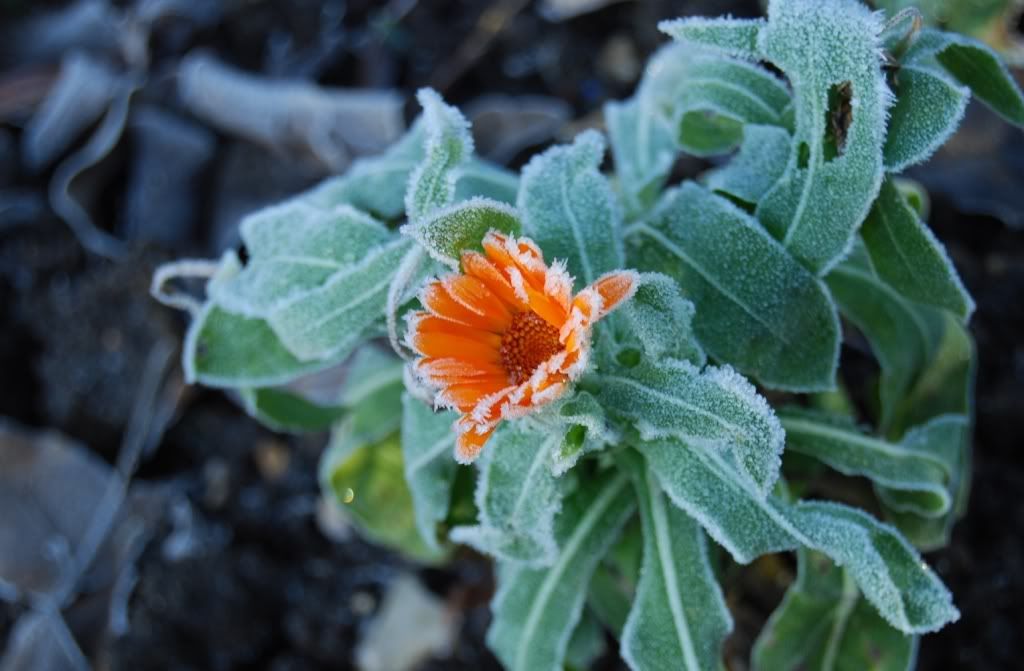
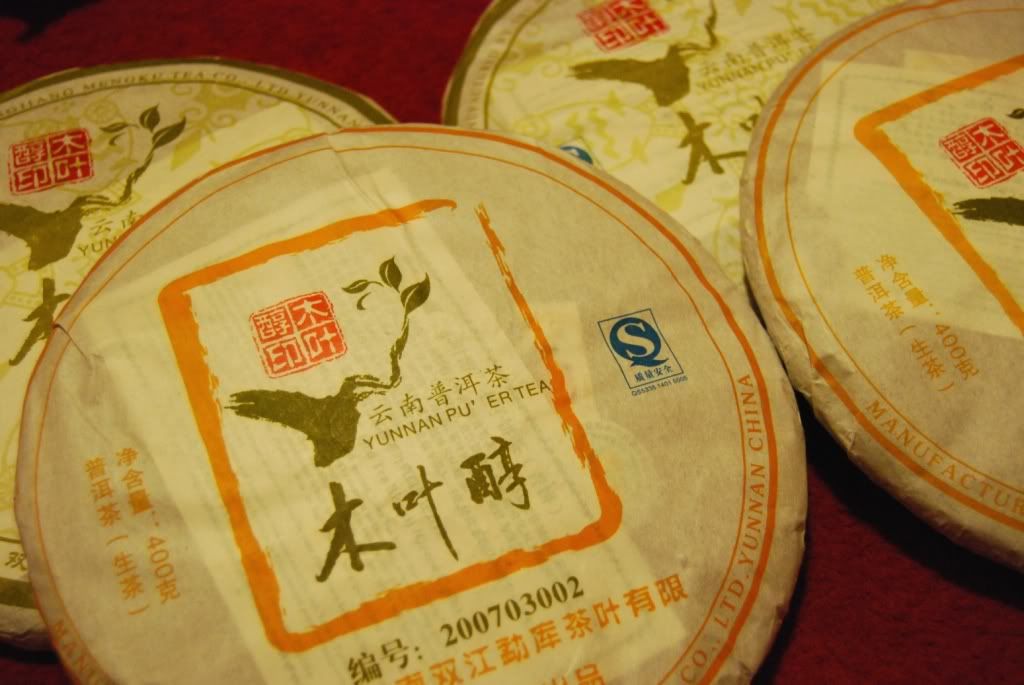

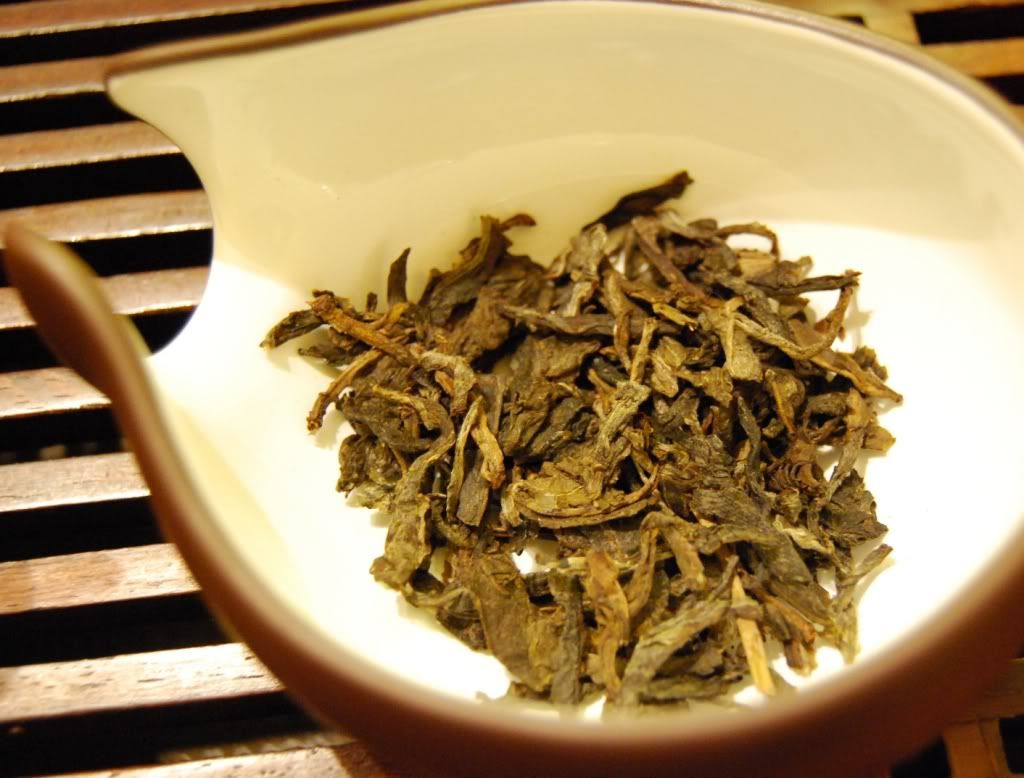
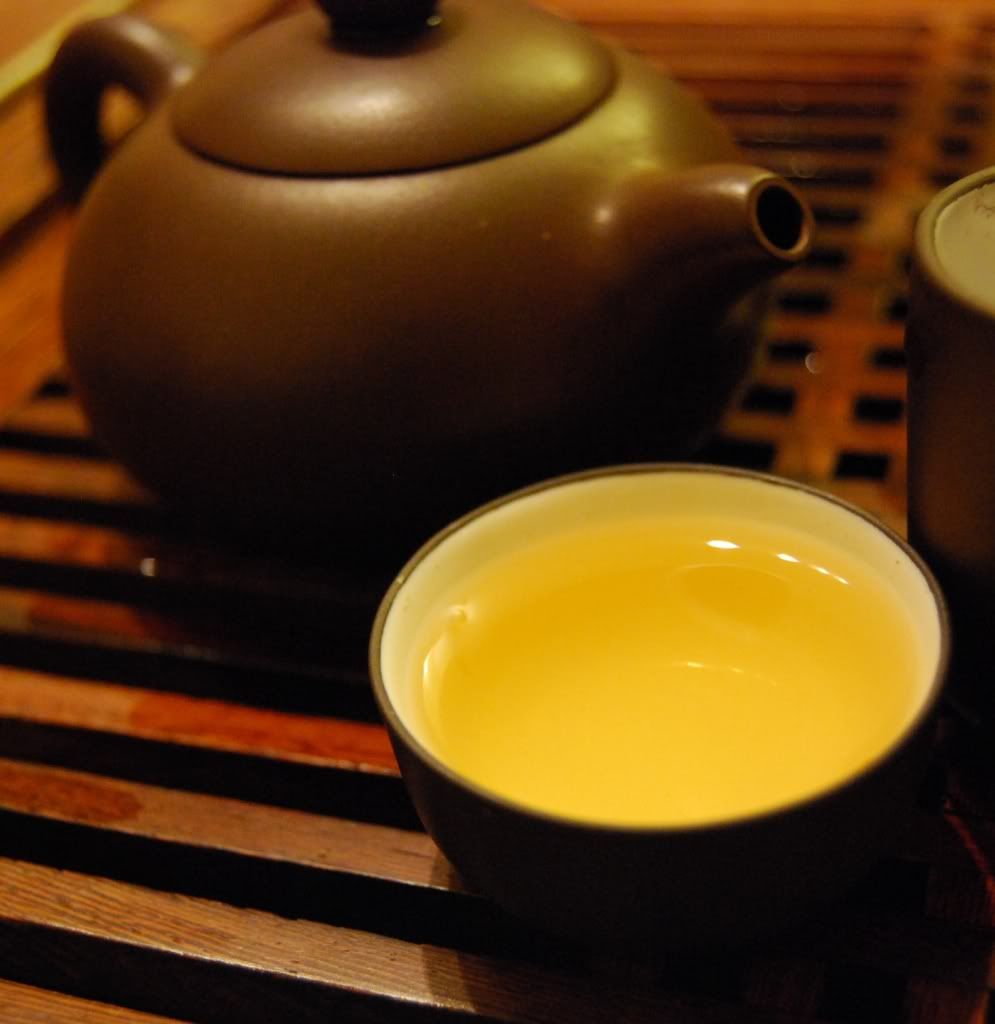

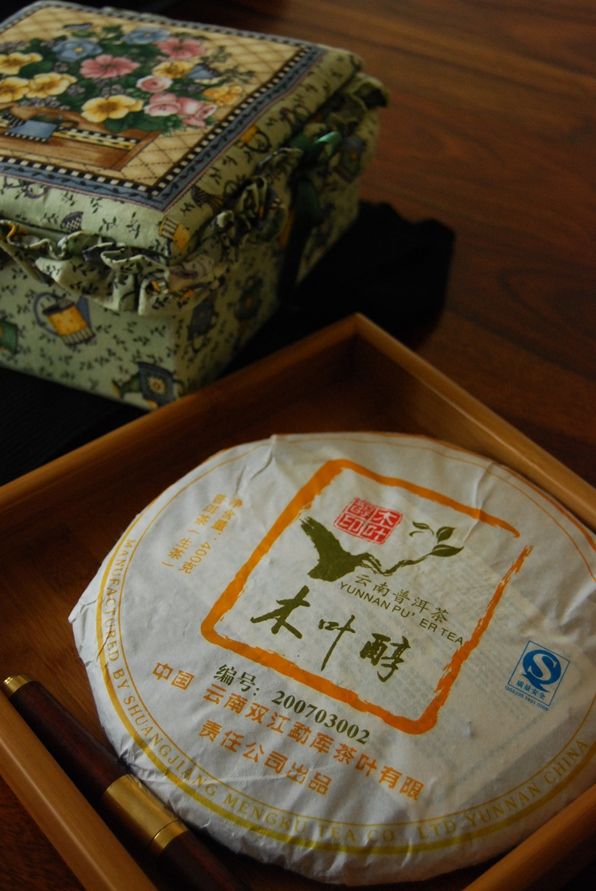
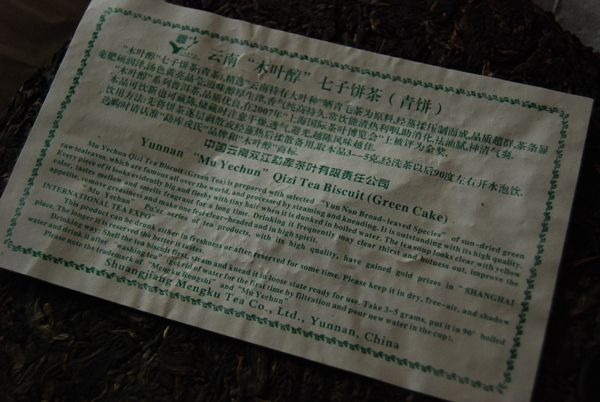
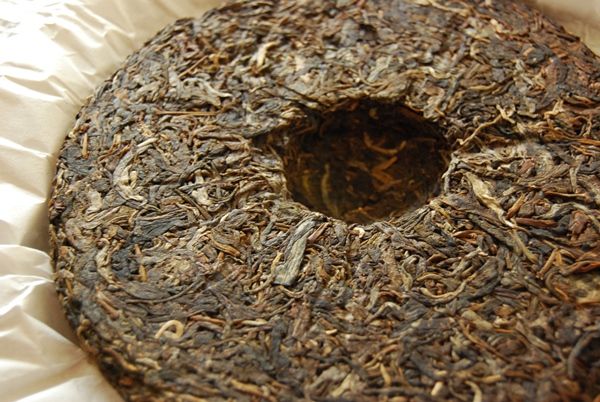
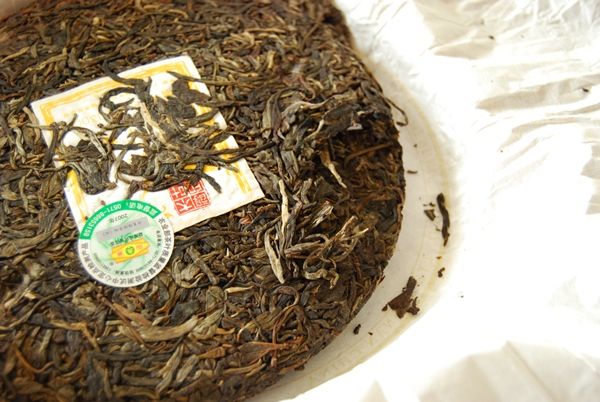
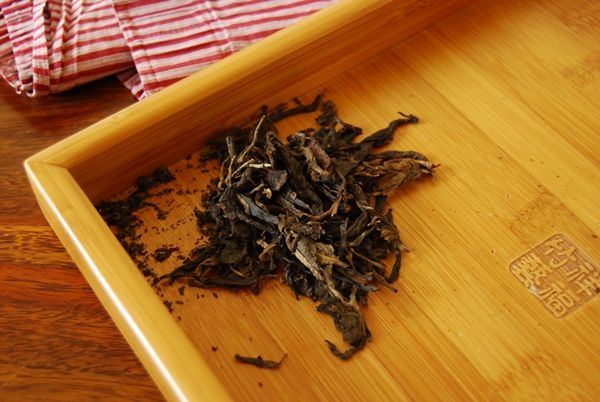
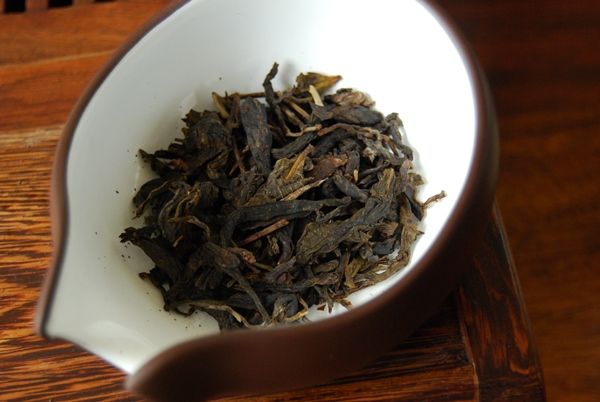
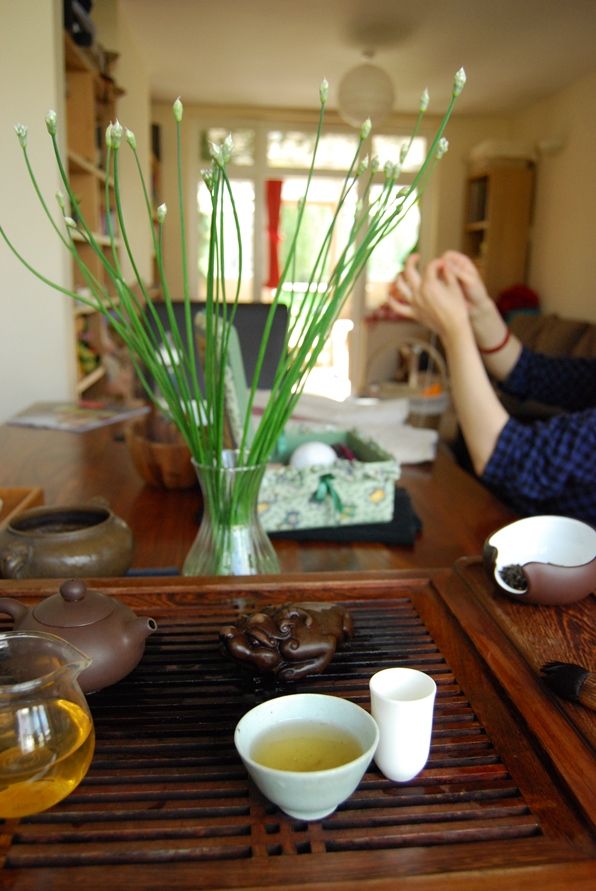

5 comments:
I can't remember if I tried this, it just looks quite curious, but too Mengku. In fact to my eye it looks like the Mengku "Spring" blend from a few years back, or do they still make that one. I honestly find them all the same :p The "Gu Hua" one from 2005 was a curiosity though, it was indeed very different. Can't remember if they even claimed that one was Ban Zhang, or something like that, not Lincang material. Anyway I digress.
Oh and just a thought, your picture might be saved by adding more blue and subtracting some red in the curves, but you should still get a blue cast in the near-white areas. Or so I conjecture, personally hating colour balance...
-vl.
Dear Vlad,
You know, I remember your thoughts on that old Guhua. I miss your tea-notes. :)
Thanks for the tip on the photo - I think I'll let that one slip away unaltered, but will bear it in mind for averting future catastrophies. (I use colour balance on my camera in order to counteract the otherwise zany blue colours introduced by various artificial light sources.)
Best,
Hobbes
Why not to get it where it is originally from? http://www.yunnansourcing.com/store/product.php?id_product=85
I think the 250% mark-up might put me off! Perhaps I'll buy a cake for comparison... :)
I imagine that Scott has stored it in Kunming, as with the Western Yunnan Tea version. If they are similar, recall that the latter is 2.5x cheaper than the YS version.
Toodlepip,
Hobbes
Dear Hobbes,
could you advise me few taobao vendors? I am looking for aged Xiaguans and Haiwans, but I have no idea which vendors are most trustworthy...
-aluoben
Post a Comment